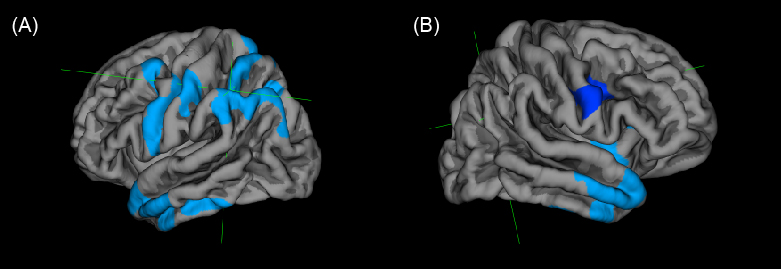Session Information
Date: Tuesday, September 24, 2019
Session Title: Parkinsonisms and Parkinson-Plus
Session Time: 1:45pm-3:15pm
Location: Agora 3 West, Level 3
Objective: This study aimed to identify the significant region which can be related to urinary symptoms in Parkinson’s disease using correlation analysis between non-motor symptoms assessment scale(NMSS) domain 7 and cortical thickness of various areas.
Background: Various non-motor symptoms are present and emerge with disease progression in Parkinson’s disease. Among these non-motor symptoms, urinary symptoms such as frequency, nocturia and urgency are not only common problems but also can contribute to impaired quality of life. However, exact mechanism causing urinary problems in Parkinson’s disease have not been known well.
Method: Total 91 patients who were diagnosed as idiopathic Parkinson’s disease between January 2010 and December 2017 were enrolled. And the correlation analysis between their NMSS domain 7 scale (which were constituted of three components ; frequency, urgency, nocturia and can measure the severity of urinary symptoms in Parkinson’s disease) and cortical thickness was conducted using Freesurfer image analysis suiteversion 6.0.(Martinos Center, Havard University, Boston, MA; http://surfer.nmr.mgh.harvard.edu)
Results: In correlation analysis between NMSS domain 7 scale and cortical thickness, supramarginal(p=.018), precuneus(p=.005), temporal pole(p=.014), precentral(p=.019) area of left hemisphere were significantly inverse-correlated with NMSS domain 7 scale. And we can also find that the insula(p=.003), precuneous(p=.002), parsorbitalis(p=.040) area of right hemisphere had significant inverse correlation to NMSS domain 7 scale.(Figure 1)
Conclusion: This study demonstrates significant inverse correlation between cortical thickness of various cortices in bilateral hemisphere and NMSS domain 7 scale. Although it is unclear that how these cortices are associated exactly with the urinary disorder in Parkinson’s disease, it can provide us a hypothesis that various cortices with a significant inverse-correlation with NMSS domain 7 scale may represent a trait marker for urinary symptoms in Parkinson’s disease.
To cite this abstract in AMA style:
R. Roh, K. Kim, K. Koh. Cortical thickness analysis in Parkinson’s disease with urinary symptoms [abstract]. Mov Disord. 2019; 34 (suppl 2). https://www.mdsabstracts.org/abstract/cortical-thickness-analysis-in-parkinsons-disease-with-urinary-symptoms/. Accessed December 30, 2025.« Back to 2019 International Congress
MDS Abstracts - https://www.mdsabstracts.org/abstract/cortical-thickness-analysis-in-parkinsons-disease-with-urinary-symptoms/

